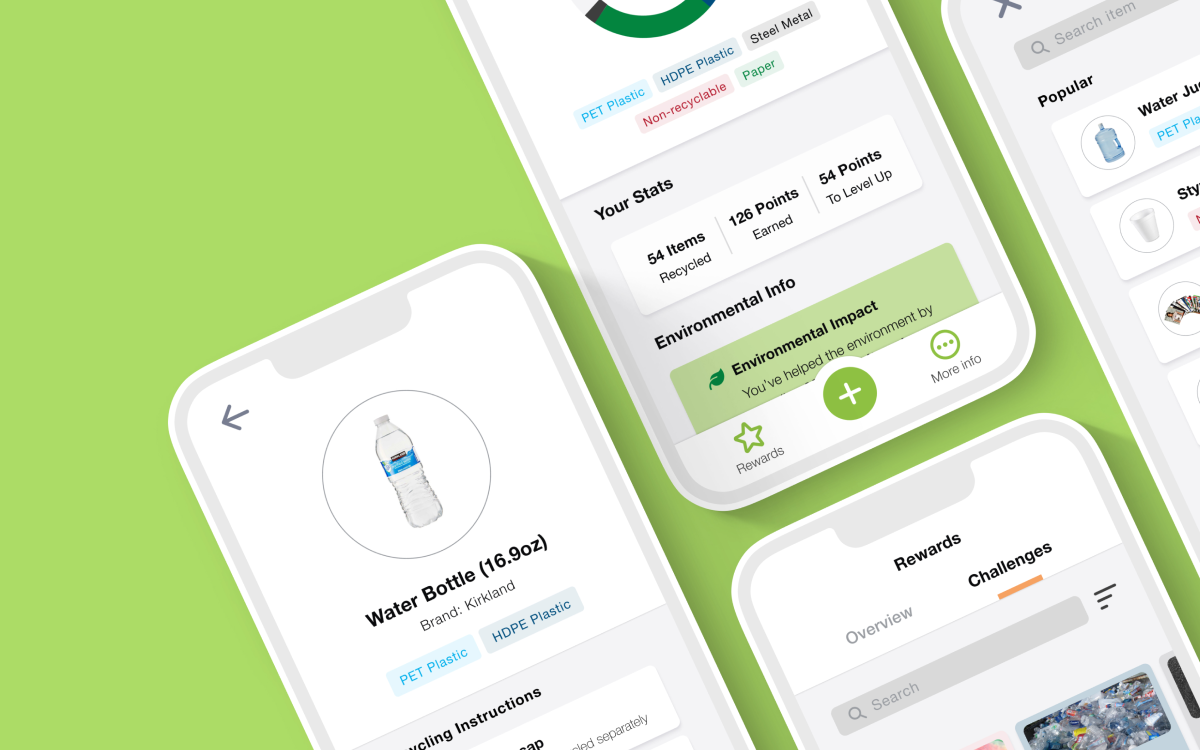Montgomery County Recycling
UX/UI DESIGN PROJECT

UX Research
Product Design
OVERVIEW
Improving recycling and garbage-handling in my county through an app
In July of 2023, I encountered an interaction with a garbage-handler in front of our house. The worker was sharing how difficult it was for him to handle messy and incorrectly-organized recycling bins. When these recycling bins are left carelessly, liquids and residue from containers can end up smearing onto worker's clothing. Also, if items are misplaced, they are at risk of being accidentally littered on the road.
With this context, I wanted to find a solution that could improve the recycling and garbage management in my county and also improve the work experience for our garbage-handlers.
DESIGN PROCESS
Following a design thinking process
Being short on time, I decided to follow a design sprint schedule for 8 days. I also decided to follow a design thinking process, however (due to the lack of time) I did not do usability testing for the app.

RESEARCH
Getting to know more about the problem through user surveys
I started off my research by initiating an online user survey with a total of 84 participants, all of which were Montgomery County residents. The purpose of the survey was to gather information about MOCO resident’s garbage-handling behaviors and recycling knowledge. The results of the survey allowed me to identify key insights and design opportunities for my target audience.
While the user surveys were in progress, my research also consisted of gaining a better understanding of MOCO’s current recycling guidelines. I also researched the environmental impacts of recycling, garbage-handler’s work process, and proper disposal of uncommon items.

THE MAIN INSIGHT
Most participants lack concern for the cleanliness of their outdoor garbage bins
I was surprised to find that most respondents claimed that they rarely clean their outdoor garbage bins. Other key insights are shown below. How could I translate these insights into design opportunities?

PERSONA
Based on the research insights, I developed a primary persona demonstrating my target users: Montgomery County residents. I focused on empathizing with my end users by identifying and understanding my personas background, goals, pain points, and emotions.

USER JOURNEY MAP
Through my research and analysis, I was able to create a typical journey map of my target user’s experience when recycling and taking out the trash. I identified potential opportunities for every step of the journey.

IDEATION
I started my ideation process by brainstorming ideas for the design questions and opportunities from my research. I organized my ideas by creating an affinity diagram where I labeled larger concepts into “sub-categories” and ideated smaller details for each.

SKETCHING
After organizing my thoughts, I initiated my sketches by first defining the product structure. Then, I sketched out iterations for the top 3 features that most addressed my persona’s needs. With these 3 features, I imagined an app that...



FINAL PRODUCT



VISUAL DESIGN
For the product’s visual design, I took inspiration from my county’s Department of Environmental Health Protection. I used their logo colors and website typeface.

PROJECT TAKEAWAYS
I learned: How to be decisive in the design process under a tight deadline. I had many ideas for product features, but the upcoming deadline challenged me to make quick decisions based on my research. I also had a few roadblock questions about technical feasibility: What if a scanned item “does not exist” in the catalog? What if a user is located outside of MOCO? What if a user falsely marks something as recycled? With little time to address these questions, I had to decide what was best to do with what I had.
I improved: My visual design skills for creating multiple cohesive interfaces in a short period of time. This project also allowed me to learn about web accessibility guidelines for line spacing and also practice thoughtful color-contrast.
Future steps: Because of time, I was not able to do user testing. For the future, I would like to receive user feedback to further improve the app. I would also like to build out other app features that address the roadblock questions that I had during the process.